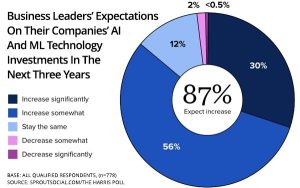by Gord Hotchkiss, October 29, 2014
Last week I wrote what should have been an open and shut column, looking at why SEO never really lived up to the potential of its business opportunity. Then my friend Scott Brinker had to respond with this comment: “Seems like Google has long been focused on making SEO a ‘result’ of companies doing good things, rather than a search-specific optimization ’cause’ to generate good rankings. They seem to have gotten what they wanted. Now as Google starts to do that with paid search, the world gets interesting for those agencies too.”
Steven Aresenault jumped on the bandwagon with this: “Companies are going to wake up to the reality that part of their marketing is really about creating content. Content is everywhere and everything…. I believe that [this] is a new way of thinking.”
As they both point out, SEO should be a natural result of a company doing good things, not the outcome of artificial manipulations practiced by a third party. It has to be baked into and permeate through the operating DNA of a company. But, as I started this column, I realized that this doesn’t stop at SEO. This is just the tip of a much bigger iceberg. Marketing, at least the way it’s been done up to now, is fundamentally broken. And it’s because many companies still rely on what I would call “arm’s-length marketing.”
Brand Stewardship = B.S.
Here is a quote lifted directly from the Ogilvy Mather website: “We believe our role as 360 Degree Brand Stewards is this: Creating attention-getting messages that make a promise consistent and true to the brand’s image and identity. And guiding actions, both big and small, that deliver on that brand promise. To every audience that brand has. At every brand intersection point. At all times.”
Now, Ogilvy is very good at crafting messages, and this one is no exception. Who could possibly argue with the company’s view of brand stewardship?
The problem comes when you look at what “stewardship” means. Here’s the Merriam Webster definition: “the conducting, supervising, or managing of something; especially: the careful and responsible management of something entrusted to one’s care.”
The last five words are the key: “something entrusted to one’s care.” This implies that the agency has functional control of the brand, and with due apologies to David Ogilvy and his cultural legacy, that is simply bullshit.
Brands = Experience
Maybe arm’s-length brand stewardship was possible in the era of David Ogilvy, Don Draper and Darrin Stephens (now, there’s a pop culture trifecta for you), when brand messaging defined the brand, but that era is long gone. Brands used to be crafted from exposure, but now they’re created through experience, amplified through the resonant network of the online community. And an arm’s-length third party cannot, nor should they, control that experience. It has to live at the heart of the company. For decades, companies abdicated the responsibility of brand stewardship to the communication experts — or, to do a little word crafting, they “entrusted [it] to [their] care.” That has to change. Marketing has to come back home.
The Virtuous Marketing Cycle
Scott talked about the SEO rewards that come from doing good things. Steven talked about authentic content creation being one of those good things. But this is a much bigger deal. This is about forcefully moving marketing’s place in the strategic chain. Currently, the order is this: Management > Strategy > Marketing > Revenue. Marketing’s current job is to execute on strategy, which comes from management. And, in that scenario, it’s plausible to execute at arm’s length. Also, things like SEO and content management fall well down the chain, typically beneath the threshold of senior management awareness. By the way, usability and other user-centric practices typically suffer the same fate.
But what if we moved our thinking from a chain to a cycle: Marketing > Management > Strategy > Marketing > Revenue > Marketing (and repeat)? Let me explain. To begin with, marketing is perfectly situated to become the “sensemaking” interface with the market. This goes beyond market research, which very seldom truly informs strategy. Market research in its current form is typically intended to optimize the marketing program.
I’m talking about a much bigger role for marketing, which would define the “outside-in” view of the company forming the context within which strategy would be determined by management. Sensemaking, as it applies to corporate strategy, is a huge topic, but for brevity’s sake, let’s suppose that marketing fills the role of the corporation’s five senses, defining what reality looks like — and smells and sounds and tastes and feels like. Then, when strategy is defined within that context, marketing is well positioned to execute on it. Finally, execution is not the end, but the beginning of another cycle. Sensemaking is an iterative process. Marketing then redefines what reality looks like — and the cycle starts over again.
Bringing stewardship of marketing back to the very heart of the organization fundamentally changes things like arm’s-length agency partnerships. It creates a virtuous cycle that runs through the length and breadth of a company’s activities. Things like SEO, content creation and usability naturally fall into place.
(311)





